Roval Traverse HD Wheels
Internal Width: 30 mm
Sizes Available: 27.5’’ (rear only) and 29’’
Material: Carbon Fiber
Stated Weights:
- Traverse HD 350 Front Wheel (29’’): 806 g
- Traverse HD 350 Rear Wheel (29’’): 995 g
- Traverse HD 240 Front Wheel (29’’): 768 g
- Traverse HD 240 Rear Wheel (29’’): 938 g
Blister’s Measured Weights:
- Traverse HD 350 Front Wheel (29’’): 820 g
- Traverse HD 350 Rear Wheel (29’’): 988 g
MSRP:
- Traverse HD 350 Front Wheel: $600
- Traverse HD 350 Rear Wheel: $900
- Traverse HD 240 Front Wheel: $925
- Traverse HD 350 Rear Wheel: $1,375
Test Duration: 6 months
Bolted To: Chromag Darco, Trek Slash, Propain Tyee
Reviewer: David Golay (6’, 170 lb / 183 cm, 77.1 kg)
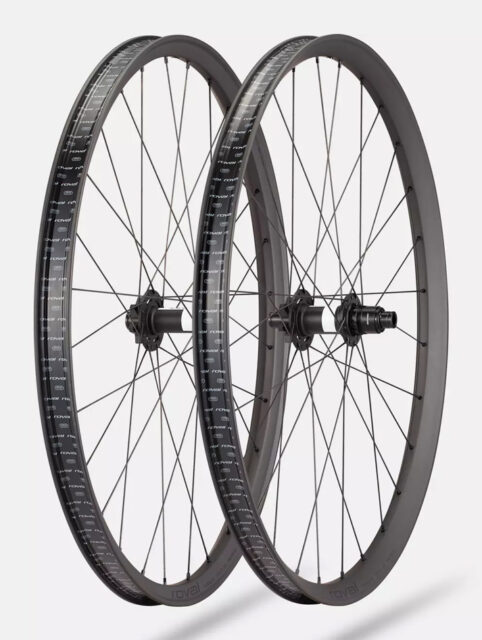
Intro
Specialized’s in-house wheel brand, Roval, gave their Traverse line of wheels a big overhaul last year, and we’ve been spending a lot of time on the burlier of the two carbon offerings in the lineup, the Traverse HD. (There’s also the Traverse SL II, which we’ll touch on a little more below, and a Traverse Alloy to round out the lineup.)
The Traverse models are Roval’s wheels for all-round Trail / Enduro use (the Control lineup covers XC duty). Roval says that the Traverse HD is meant for general Trail rides, bike park laps, and Enduro racing — in short, the burlier end of the all-rounder spectrum. There are a whole lot of carbon wheels aimed at that general use case, but the Traverse HD wheels have some interesting design features that set them apart.
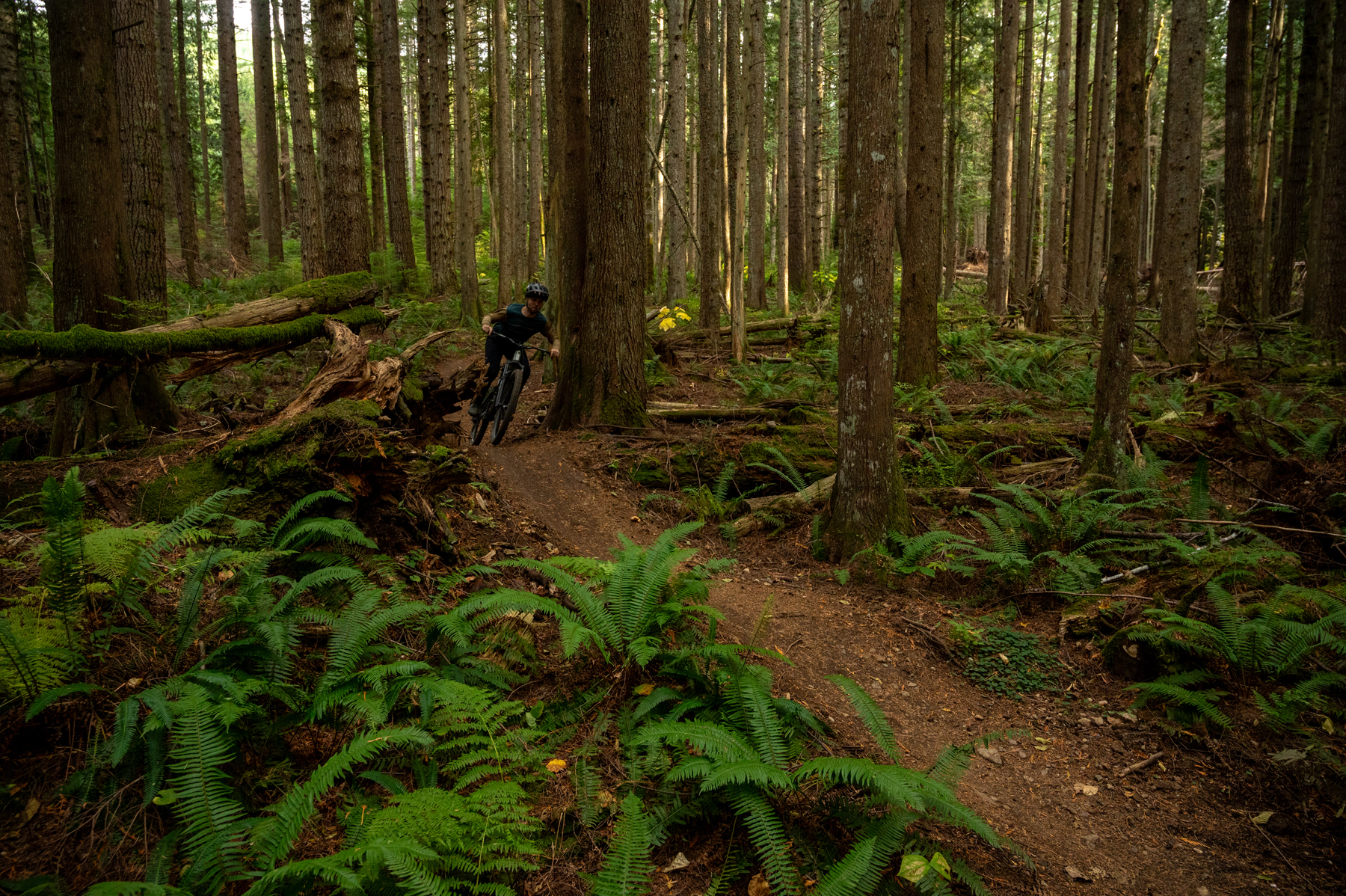
Design
Roval isn’t new to making carbon mountain bike wheels, but the Traverse HD looks pretty different from their prior offerings. The most striking aspect of them is the profile — the sidewall flares dramatically to a 5 mm lip with a flat upper edge. Roval says this is designed to prevent pinch flats by spreading the force from a rim strike over a larger area and making the rim less prone to cutting the tire than a more typical profile. The Traverse HD rims also get different front- and rear-specific carbon layups to tailor their relative stiffness (the rear is apparently beefed up a bit); both share the same 30 mm internal / 40 mm external width and 24 mm cross-section depth. The Traverse HD rims are also asymmetric to even out the spoke bracing angles.
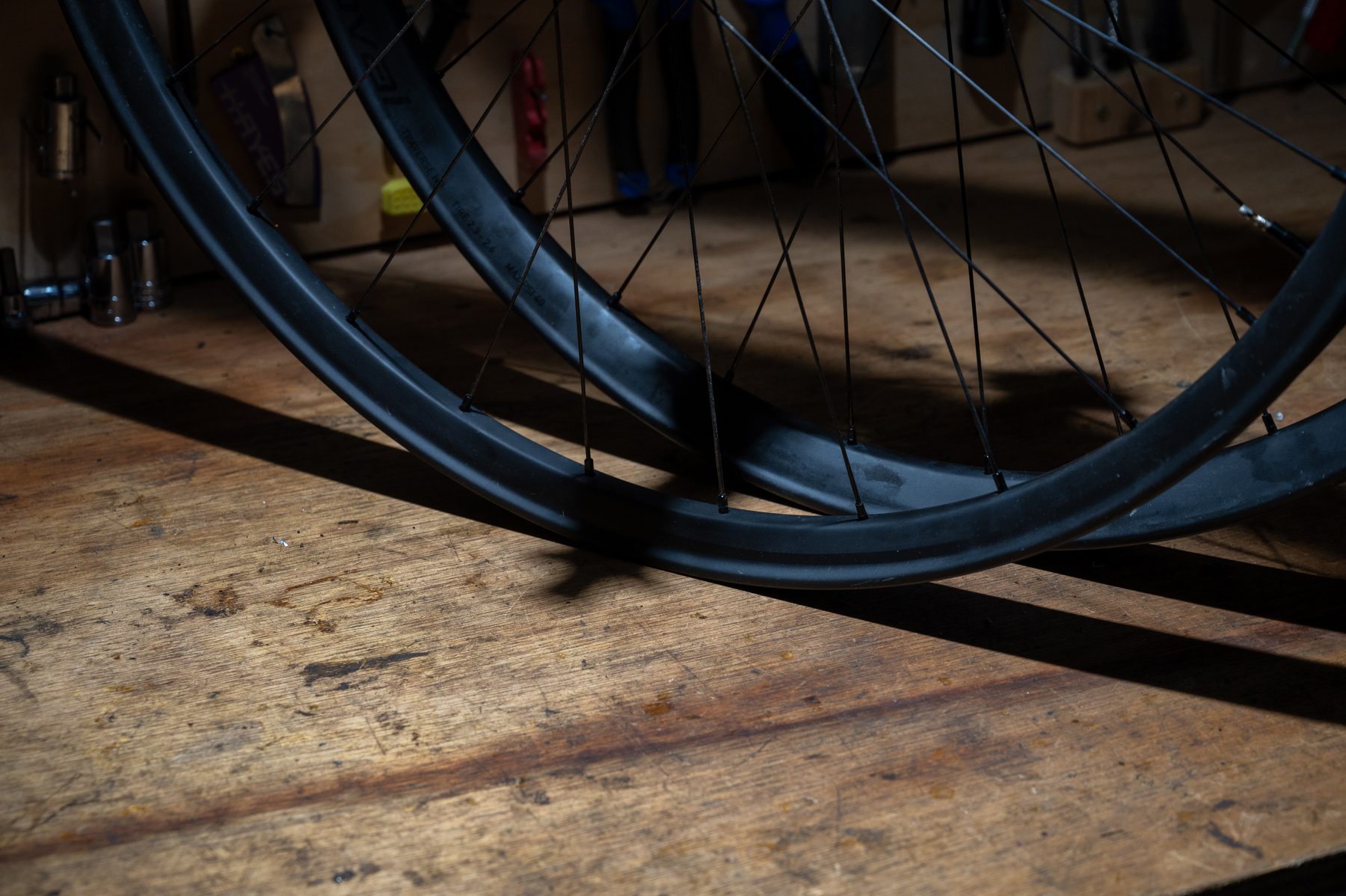
Another interesting detail is that the Traverse HD rims feature a threaded insert at the valve stem (Roval calls it “ThreadBed”) into which a proprietary tubeless valve can thread. The business end is still a normal Presta valve with a standard removable core, but by doing away with the external threads on the body, Roval says that they can increase the internal diameter of the stem for better airflow and to mitigate sealant clogs. Having the valve thread directly into the rim does away with the need for a compression nut and Roval says that it prevents air loss due to rim flex causing the valve seal to come loose.
The valves feature a 5 mm Allen key on the inside so you can get them good and tight from the get-go, but might be tough to tighten without removing the tire, should the need ever arise. Normal valves fit just fine too (with the standard compression nut on the outside of the rim), so you’re free to use those if you prefer.
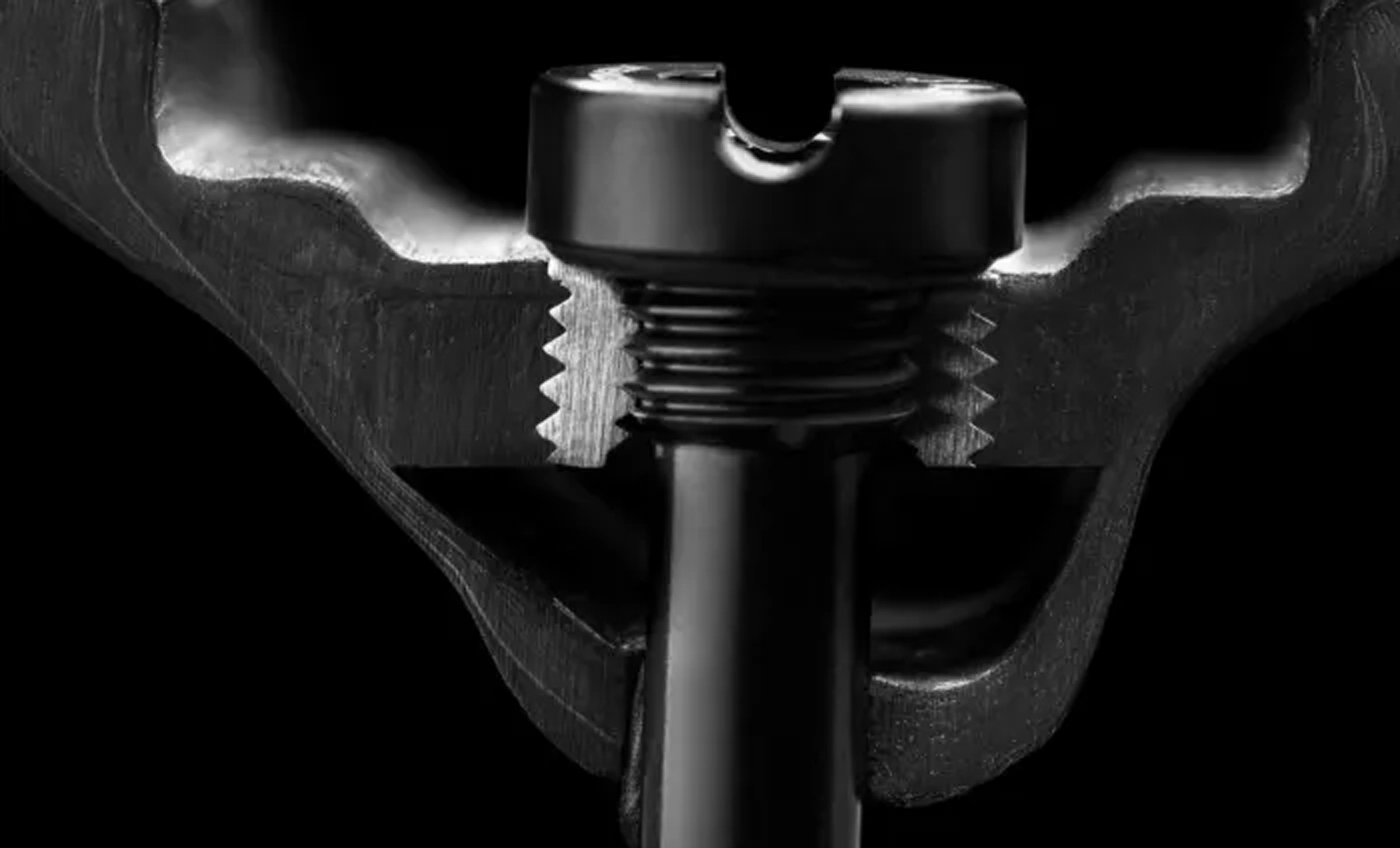
Versions
Roval offers the Traverse HD in 29’’ front wheels only, with your choice of a 27.5’’ or 29’’ rear wheel. The hub options are all from DT Swiss. The version we’ve tested has DT 350 hubs and Competition Race 2.0 / 1.6 / 2.0 mm spokes, at an MSRP of $600 for the front wheel and $900 for the rear. The Traverse HD 240 gets — surprise — DT 240 hubs, along with an upgrade to Aerolite spokes, which bumps the price up to $925 (front) and $1,350 (rear), while saving a claimed 95 grams for the wheelset. No matter which hub or wheel size option you choose, the Traverse HD wheels come with 28 spokes, 110x15mm / 148×12 mm Boost spacing, six-bolt rotor mounts, and a SRAM XD freehub. Microspline and Hyperglide freehubs are available separately if you need to make that conversion; SuperBoost frame owners are out of luck.
Roval also offers a lighter-weight Traverse SL II rim with the same hub options and pricing. The Traverse SL II is described as being an all-round Trail wheelset and is about 60 grams lighter for the pair than the Traverse HD. It shares the same 30 mm internal width and chunky 5 mm “Flat Top” bead interfaces, but a shallower 20 mm cross-section depth (as compared to 24 mm on the HDs) and a more pinched, angular profile.
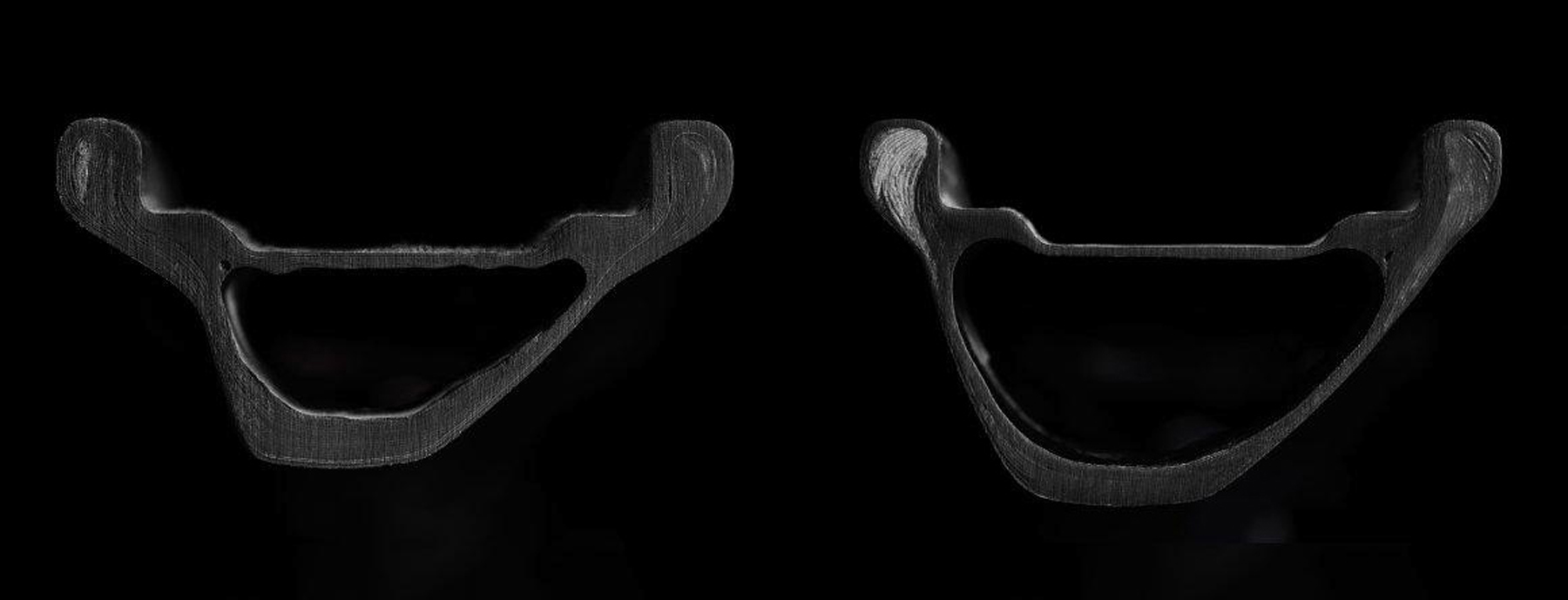
Weight (and Comparisons)
Roval says that the Traverse HD wheels are up for everything from aggressive Trail bike use to bike park laps, and while their weight isn’t a big outlier, it’s on the lighter side of average for that sort of carbon wheel. Roval doesn’t publish rim weights for the Traverse HD, but for reference, below are the listed weights for various wheelsets in both the lightweight Trail and burlier Enduro categories; the wheelset weights are all as measured by Blister and are for a 29’’ wheelset unless otherwise noted.
Wheelsets:
1,571 g NOBL TR35 + DT Swiss 240 EXP (carbon, measured)
1,576 g Reynolds Blacklabel 329 Trail Pro (carbon, measured)
1,639 g DT Swiss XMC 1501 (carbon, stated)
1,648 g Enve M630 + Industry Nine 1/1 (carbon, stated)
1,718 g Reserve 30|SL + Industry Nine 1/1 (carbon , measured)
1,740 g We Are One Faction + Industry Nine 1/1 (carbon, stated)
1,758 g Revel RW27 + Industry Nine 1/1 (carbon, stated)
1,803 g Chris King MTN30 (carbon, measured)
1,808 g Roval Traverse HD 350 (carbon, measured)
1,833 g Reynolds Blacklabel 309 Enduro Pro (carbon, measured)
1,840 g Revel RW30 + Industry Nine Hydra (carbon, measured)
1,840 g Reserve 30|SL AL (aluminum, stated)
1,848 g DT Swiss XM 1700 (aluminum, stated)
1,849 g Reserve 30|HD + Industry Nine Hydra (carbon, measured)
1,864 g Forge+Bond 30 EM 28h + Industry Nine Hydra (carbon, measured)
1,877 g We Are One Union + Industry Nine Hydra (carbon, 27.5’’ diameter, measured)
1,901 g We Are One Triad + Industry Nine Hydra (carbon, measured)
1,916 g Enve AM30 + Industry Nine 1/1 (carbon, measured)
1,985 g DT Swiss EX 1700 (aluminum, stated)
2,069 g Enve M730 / Chris King (carbon, measured)
2,104 g Reserve 30|HD AL (aluminum, measured)
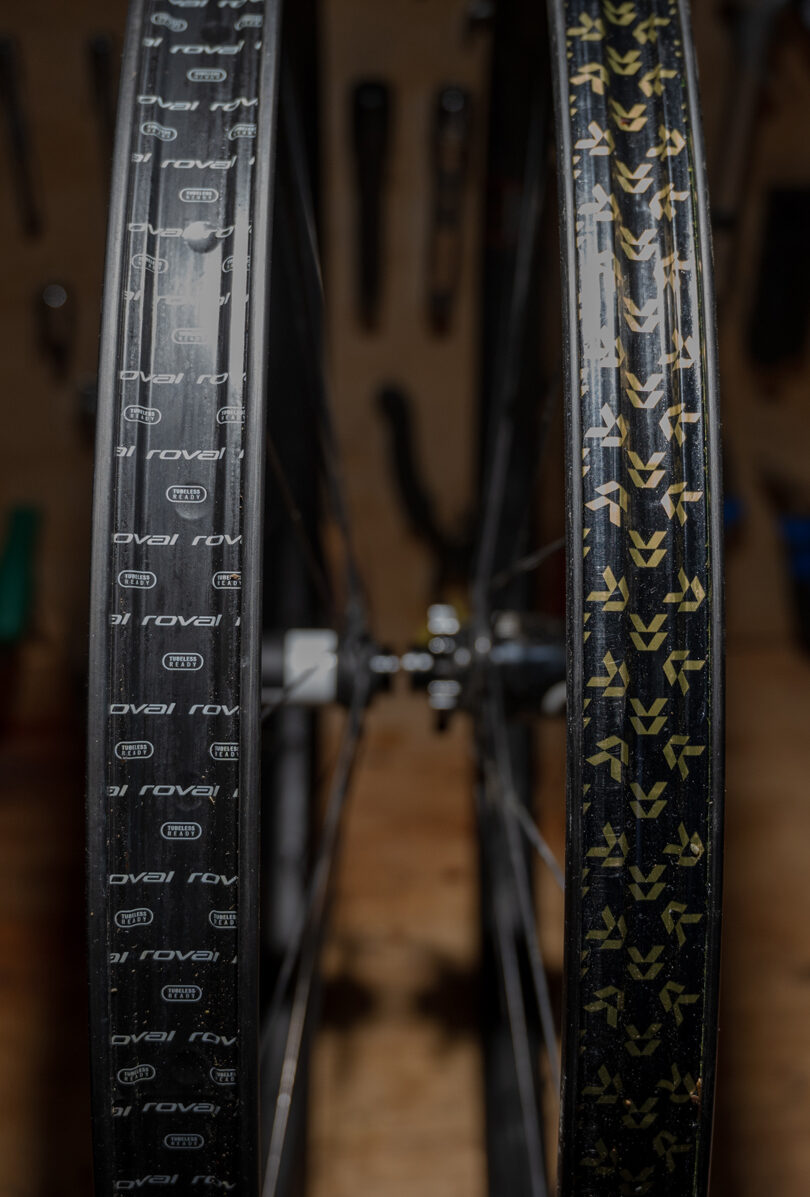
On The Trail
I kicked off my time with the Traverse HD wheels in Whistler for Crankworx, onboard the Chromag Darco. The Darco might be the only 120mm-travel bike that I’d be genuinely excited about riding in the Whistler bike park (it hurt, but was a blast). That was a rather abusive environment to throw the Traverse HD into, but they held up well, both during that initial testing and over the next several months.
As for their ride quality, the Traverse HDs feel nicely rounded in most respects, rather than being off to one end of the spectrum or the other. They’re stiff enough to track precisely without feeling punishingly harsh, and while they’re not the most compliant, ultra-smooth-riding carbon fiber wheels out there, they hit a nice middle ground that should work for a lot of folks.
It’s not like a softer-flexing, more compliant wheel is an inherently better thing, either. Particularly for the more aggressive gravity-oriented use that Roval orients the Traverse HD toward, really soft wheels can feel vague and a little unpredictable when pushing them harder. The Traverse HD just feels like a nice middle-of-the-road option there, rather than any sort of wild outlier.
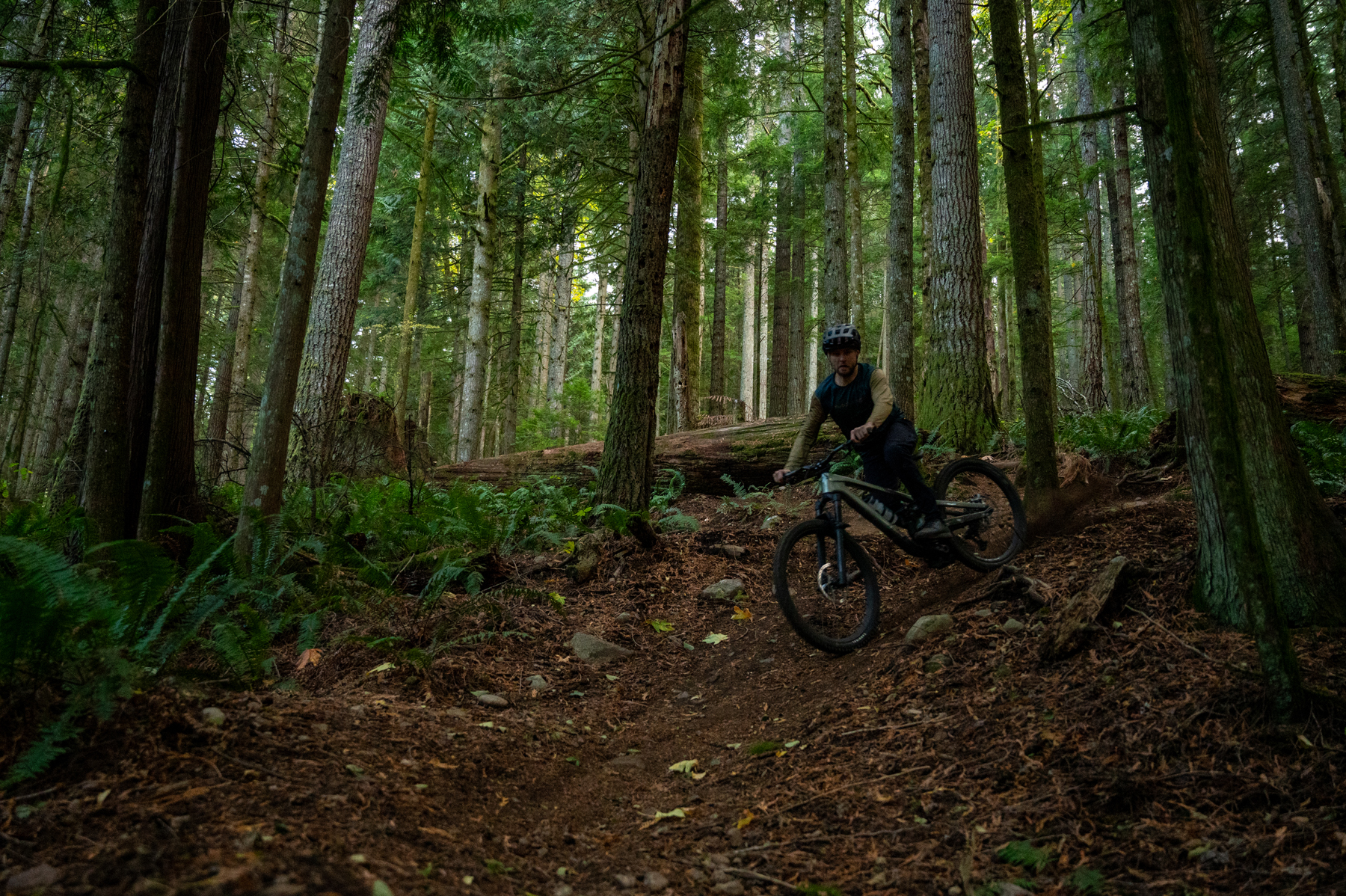
And to their credit, that’s pretty much how Roval describes the Traverse HD. Rather than throwing around superlatives about any particular attribute of ride quality, Roval just says they’re trying to balance compliance and grip with stiffness and precise tracking, and for the kinds of riding they’re meant for, the Traverse HD wheels do that nicely.
Roval talks a much bigger game about the strength of the Traverse HD wheels, saying that they’re the strongest carbon wheels they’ve made to date. It had been a while since I’d been on any of their offerings prior to testing the Traverse HD, but they’ve held up without incident so far.
The spoke tension is still even and I’ve yet to break any spokes (some of Roval’s earlier carbon wheels used super low spoke counts and tended to suffer from spoke failures, so the much more conventional 28-hole, J-bend, 2-cross lacing here is welcome). The DT 350 hubs on our review wheels are still my favorite bang-for-buck option out there, too, particularly given their great track record for durability. The price premium for the Traverse HD 240s (which, again, get DT Swiss Aerolite spokes in addition to the fancier 240 EXP hubs) is frankly a little tough to justify, but the Traverse HD 350s are a solid value and are still pretty light for a burly carbon wheelset, at just over 1,800 grams for the pair.
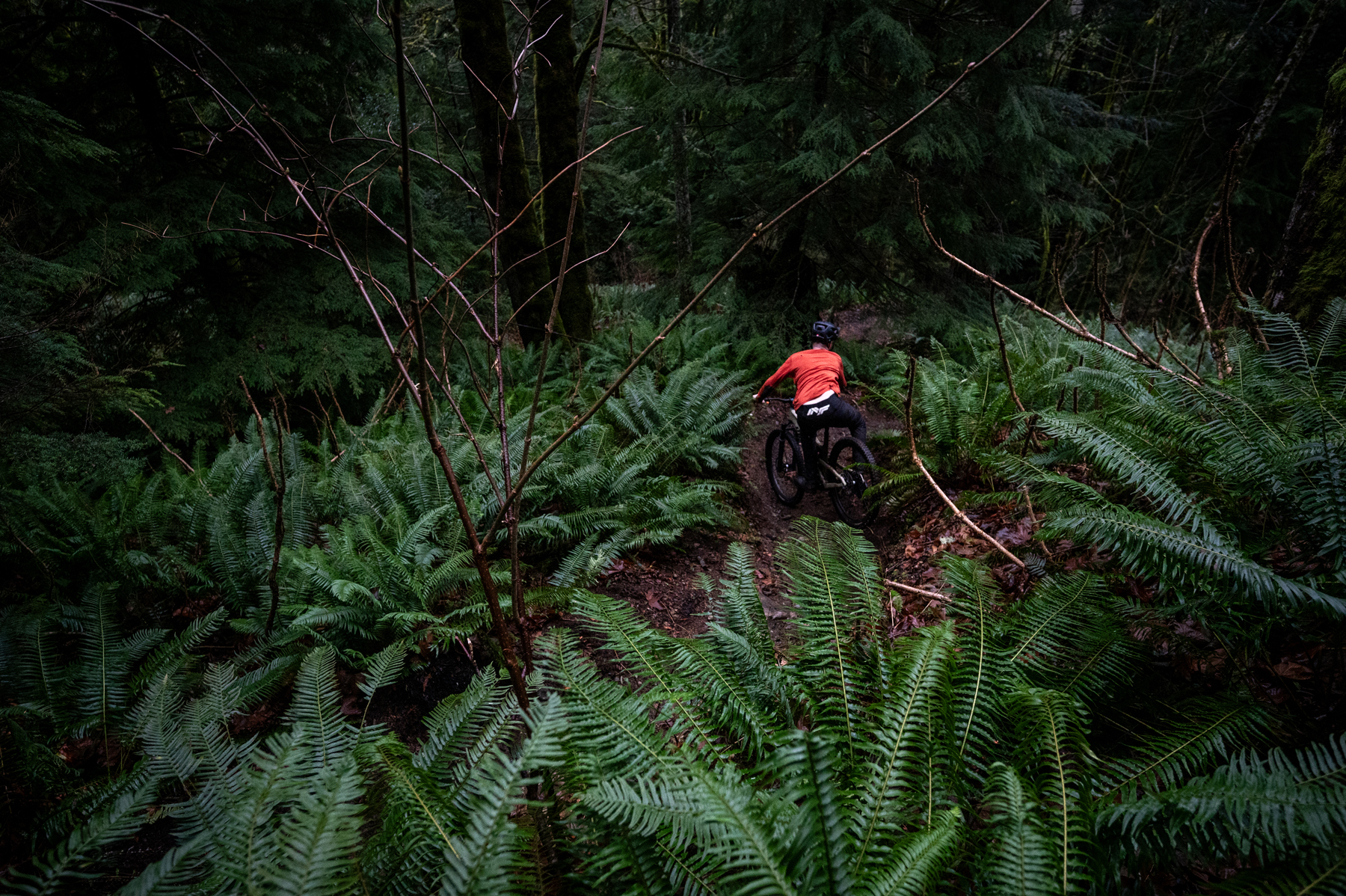
I think there’s something to Roval’s claims that the extra-wide bead lips on the Traverse HD rims help mitigate pinch flats. I didn’t suffer any while using a variety of different tires during my time on the Traverse HD, and rim strikes on them feel just a little more muted than they do on most other carbon rims. It’s admittedly not the most scientific test, but I put a nearly worn-out Maxxis Dissector Exo (a lighter-duty casing than I normally would run on anything beefier than an XC bike) on the back of the Darco for a little while and deliberately tried bashing it around at a quite-low 18 psi to see what kind of damage I could do. I burped the tire off the rim while cornering before I managed to pinch flat it, but it took a couple of hard rim strikes without incident before then.
The inner channel on the Traverse HDs is very wide but not as deep as some other rims out there, which does make mounting more stubborn tires a touch more difficult than average. For the most part, I maybe had to work a tiny bit harder than average, but didn’t have any real issues, including with Specialized’s own Cannibal Grid Gravity tires and a few options from Maxxis across their range of casing options.
The only tires that really caused issues were Continental Kryptotal DHs, which I’ve found to be pretty tough to mount in general. I was ultimately successful in getting those on as well, but it took two tire levers and a lot more four-letter words than I’d like. It’s very much a case of tough tires plus a slightly tighter-than-average rim, rather than it being down to the rim alone. But if you’re tempted to try that particular combination, be warned. Most other tires should be just fine, and the upside of the Traverse HD’s inner profile is that I’ve found them to be notably easy to seat tires on with a floor pump once you get them mounted in the first place.
On that same note, I didn’t notice a huge improvement in airflow with the ThreadBed valves as compared to normal Presta ones, at least with the valve core in place. Removing it (which tends to be a big help in seating tires with Presta valves of any sort) probably makes an even bigger difference on the ThreadBed valves than it does on standard ones, but I still needed to resort to doing so a couple of times. I was a little skeptical of the threaded rim interface going into the testing, but I’ve become a fan. In my experience, most issues with tubeless tape failing / leaking originate from the valve stem, and the ThreadBed setup makes it easier to get a good, robust seal there and stop the valve from coming loose. And while I could see it being pretty annoying if the valve were to loosen up and require you to take the tire off to tighten it back down, no such issues have cropped up in practice.
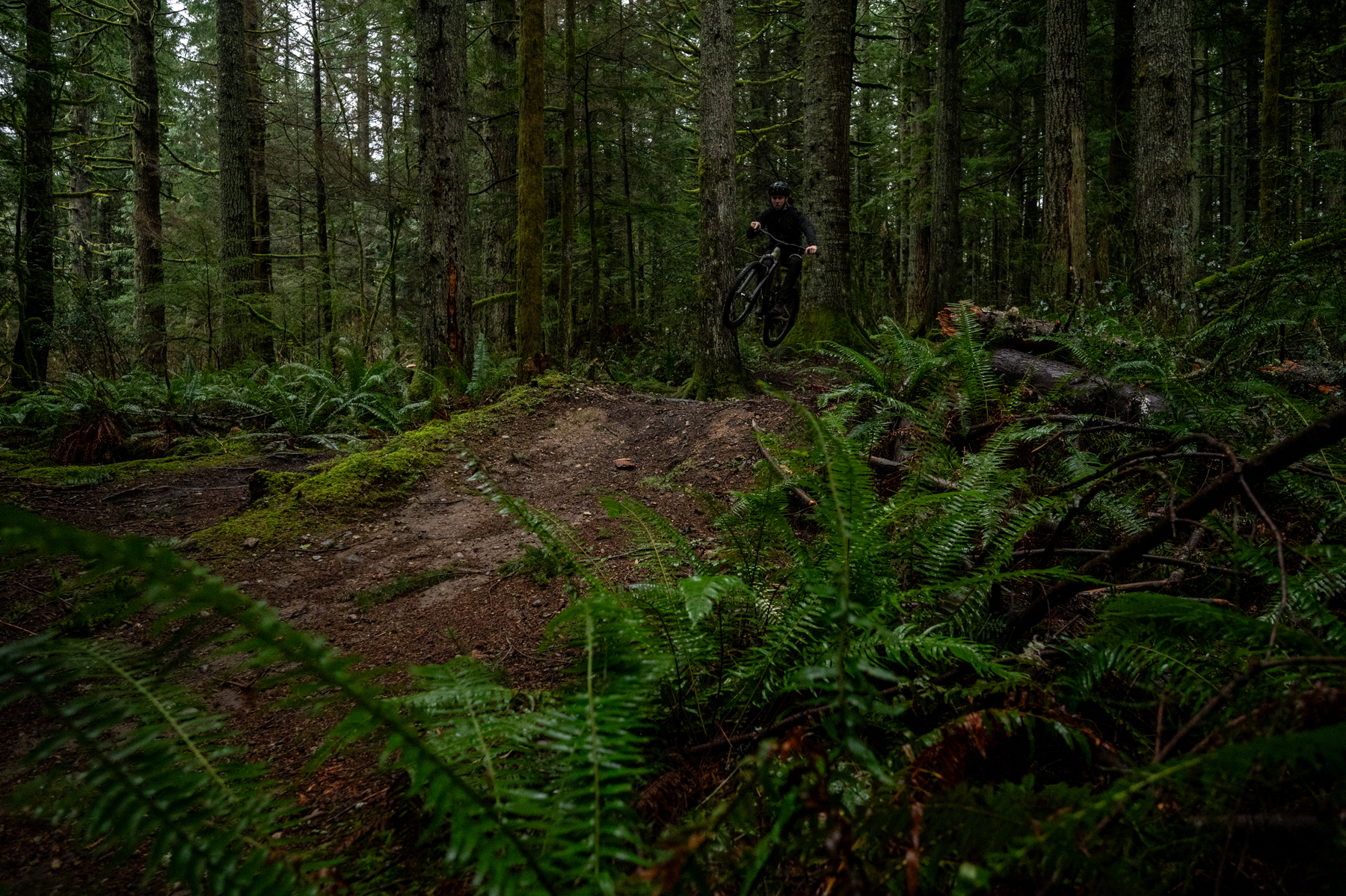
That said, I’m not that sold on them helping to prevent sealant clogs — if anything, I think the bigger opening on the inside of the valve might just encourage more sealant to make its way to the valve core, making them a little more clog-prone. But they aren’t dramatically different from normal Presta valves, either, and you can still run standard ones (or Reserve Fillmores) if you’d like.
They have their tradeoffs, but all told, I’m plenty happy running the ThreadBed valves, and applaud Roval for taking a stab at improving what is, frankly, a somewhat janky interface in most tubeless systems — while preserving the option to run normal valves. The wide bead lips on the Traverse HD rims do seem to help mitigate pinch flats, they ride nicely, and the more affordable DT Swiss 350 hub option is a welcome alternative to the seemingly ubiquitous Industry Nine Hydra in the high-end carbon wheel market.
Bottom Line
There are more good options for burly carbon fiber wheels than ever before, and the Traverse HD (especially the more affordable 350 version) is a solid addition to that list. They aren’t available for every possible fit combination (see the “Versions” section, above) but have the more common bases covered. Most importantly, their ride quality is well-rounded, they’ve held up well to a good bit of heavy use, and they’ve got some interesting features to help stave off pinch flats and the like.
